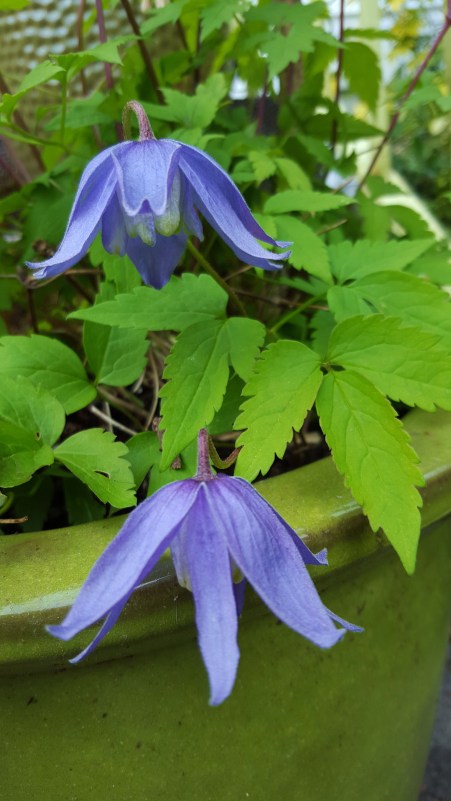Seattle has been drowning, drenching, and dripping for the past three months. Most days, staying reasonably dry while working in the garden has not been possible. Nevertheless, the garden is burgeoning, and the Clematis atragenes have begun to bloom. These are early spring bloomers have delightful nodding bells in many soft colors and delicate foliage. Included among the C. atragenes are C. alpinas (usually single), C. macropetalas (usually double), and C. koreanas.
I have sadly lost three of my six atragenes, C. Jacqueline du Pre (a crisp and lovely pink and white alpina), C. Cecile (a delightful blue-purple alpina), and C. Pauline (a richly colored purple macropetala). Hrmph! Maurice Horn of Joy Creek Nursery told me that he fears that the warmer weather of recent years in the Pacific Northwest has taken a toll on these cold-hardy plants. We may start having trouble growing them here. The three I lost were all against the house; the three I have left are all in the open garden, which is presumably a bit cooler, at least in winter. I guess I’ll just have to wait and see.
Hmm, maybe I should buy more just for testing purposes.

In my garden, the first to bloom (as usual) is C. Blue Dancer with its extra long sepals.

Here’s the luscious and rosy C. Markham’s Pink, just beginning its show. I also have C. Willy, another pink and white one, but his buds are still tightly closed.







